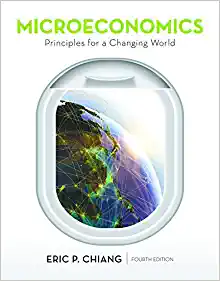Question
A) A local government authority wants to determine how many times to clean a residential street per month. It costs $120 to clean the street.
A) A local government authority wants to determine how many times to clean a residential street per month. It costs $120 to clean the street. There are 20 houses in the street. Ten households each have a monthly demand for street cleaning equal to QA=5-0.25p, where the subscript A strands for type A household. The other ten type B households have a demand equal to QB = 5-0.5p.
- what is the efficient number of street cleanings per month? What would be the net benefits to all the street residents if the efficient number were provided? Support your answer with a graphical illustration.
- suppose that the local government decides to provide the cleaning services to the street and finance it out of taxes. Show that the local government can achieve the social optimum by setting the correct tax prices tA and tB on type A and type B households, respectively. What taxes should it set?
B) Explain why a set of tax prices such as the one proposed in (A)(1) is unlikely to provide the proper incentives for individuals to reveal their true preferences for the public good. What other taxes have been proposed in the public goods literature to induce individuals to reveal their true preferences for public goods? What is the main principle guiding the alternative tax proposal? What are the main drawbacks?
Step by Step Solution
There are 3 Steps involved in it
Step: 1

Get Instant Access to Expert-Tailored Solutions
See step-by-step solutions with expert insights and AI powered tools for academic success
Step: 2

Step: 3

Ace Your Homework with AI
Get the answers you need in no time with our AI-driven, step-by-step assistance
Get Started


